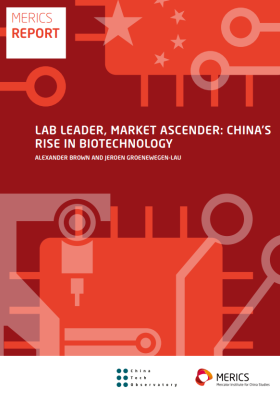

Five things about crisis communication for think tanks
At our recent WonkComms Breakfast Club in Berlin, think tank communication experts, researchers, and senior management came together to discuss a growing challenge: how to respond when institutions face coordinated reputational attacks.
From personal smear campaigns to cyberattacks linked to geopolitical conflict, the session offered crucial lessons for anyone working in public policy, academia and advocacy.
1. Attacks can come from anywhere
One of the gripping stories came from Dr. Isabelle Werenfels, Senior Fellow at the German Institute for International and Security Affairs (SWP), who was targeted by Moroccan media in a months-long smear campaign. Her research on North Africa was deliberately misrepresented to promote anti-German narratives, resulting in widespread online abuse and even indirect condemnation by Morocco’s king.
The learning: Even states that are usually considered to be partners can initiate aggressive disinformation campaigns. Reputational risks are no longer confined to dealings with authoritarian superpowers like Russia or China. Any institution working on foreign policy or politically sensitive topics must be aware that visibility and expertise can make their staff or the institution targets.
2. Crisis response isn’t optional
When Isabelle sought support, her institution had no set procedure in place yet. The communications team advised to ignore the campaign, and leadership underestimated the severity of the situation. Several weeks passed before SWP issued even a public statement.
However, the institution learned from this experience, enabling more confident and timely responses to subsequent incidents. As Wiebke Ewering, Head of Communications at the German Council on Foreign Relations (DGAP), emphasised, crisis communication must be a core institutional function rather than an ad hoc response. Organisations need the right structures, a reliable institutional memory and clear protocols in order to respond swiftly and confidently.
Nina Ohlmeier, Director of the Mercator Center Berlin, added a foundation’s perspective suggesting how foundations can - and should - develop structures for both proactive political positioning and rapid response. She described how Mercator developed its first integrated communications strategy in preparation for increasingly polarised public debates. She also emphasised the importance of supporting smaller partners, who may not have access to similar communications resources.
3. Solidarity is powerful
Institutions with strong external networks in academic, media or politics prove more resilient when under attack. But these networks didn’t spring up in the moment of need, they already existed beforehand.
As Wiebke said: “Public backing can make a huge difference when individuals or institutions are targeted.” Whether it's a supportive social media post, a public statement from a partner, or a behind-the-scenes phone call, solidarity helps counter disinformation and protect credibility. Organisations need to cultivate alliances across institutions and sectors to ensure rapid support when needed.
In addition to institutional alliances, there are also specialised support structures for individuals. HateAid https://hateaid.org offers legal support and advocacy for those affected by digital violence. SciComm-Support https://scicomm-support.de/en , a joint initiative of Wissenschaft im Dialog and the German Rectors’ Conference (HRK), provides guidance and crisis counseling for scientists and science communicators under public attack.
4. Cyber threats and extremist labeling are escalating risks
Dr. Gabriele Freitag, Executive Director of the German Association for East European Studies (DGO), shared how their organisation was designated first an “undesirable organisation” and later an “extremist” one by the Russian government - effectively criminalising the work under Russian law. Around the same time, DGO’s servers came under cyberattack putting people working with DGO at significant personal risk.
The merging of legal, reputational, and digital threats is becoming the new normal. Organisations must treat cybersecurity and political risk as strategic—not just operational—issues. This includes threat modelling, staff training, and scenario planning for politically motivated attacks.
5. Internal attacks can be harder to navigate than external ones
Not all threats come from abroad. Researchers working on migration and other polarising issues often face criticism from fellow citizens across the political spectrum. Unlike state-led smear campaigns, these attacks may be harder to classify and trigger internal debates about public positioning and public support can often prove more difficult to mobilise.
Attacks from inside one’s own society often blur lines between professional critique and political agitation. This makes it even more important for institutions to prepare tailored response plans, establish clear internal support mechanisms, and communicate their mandate and integrity confidently – especially in politically contested environments.
Final takeaway: Preparation creates resilience
The discussion at the WonkComms Breakfast Club showed that reputational attacks are becoming increasingly commonplace for researchers and institutions, and are no longer one-offs. But responses don’t have to be improvised. With solid preparation such as clear internal protocols, designated spokespersons, up-to-date risk assessments, and pre-drafted holding statements, organisations can respond swiftly. Combined with strategic alliances and a clear communications approach, this enables them to protect not only their reputation but also their staff, their research, and their public mission. In some cases, a strong and transparent response can even reinforce credibility and build long-term public trust.
John Schwartz
Founder and CEO of Soapbox

John Schwartz is the founder and CEO of Soapbox, a leading design and communications agency for think tanks. He previously worked at the UK's Institute for Public Policy Research. John's expertise includes brand strategy, graphic design, digital communications, content strategy, web development and data visualisation. His clients include Chatham House, the Institute for Fiscal Studies, United Nations University, the IPCC, DGAP and the Atlantic Council.